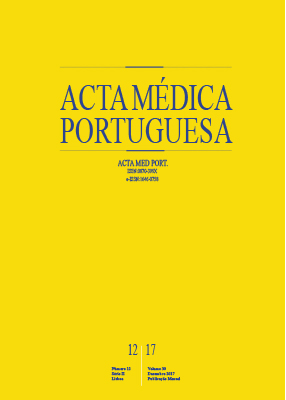Anaesthesia in Dental Medicine with Local Infiltrative Anaesthetic Technique Versus Diploe Anaesthesia Delivery Systems: Efficacy and Behaviour, an Experimental Study
DOI:
https://doi.org/10.20344/amp.8710Keywords:
Anesthesia, Dental, Local, Heart RateAbstract
Introduction: This study aimed to compare the analgesic efficacy and the influence of local infiltrative anesthesia techniques, with diploe anesthesia, on the cardiac rhythm
Material and Methods: We selected 32 healthy volunteers who were given both anaesthetic techniques on tooth 1.4 (0.45 mL of lidocaine with adrenaline, 1:80 000). In the first phase, the volunteers underwent periapical infiltrative anaesthesia. In the second phase, diploe anaesthesia was performed with a QuickSleeper® device. The parameters analysed were pulp response to the electrical test and heart rate of the participants. These parameters were evaluated on five different occasions: before anaesthesia (t0), immediately after anaesthesia (t1), 15 minutes later (t15), 30 minutes later (t30) and 60 minutes later (t60). Statistical analysis of the data was performed using SPSS 2.0 software, with α = 0.05.
Results: With the diploe anaesthesia, a level of analgesia was obtained faster. There was a slight increase in heart rate soon after administration of diploe anaesthesia, which stabilized after t15 of the procedure. This technique still proved to be painless.
Conclusion: Diploe anaesthesia demonstrated better results in terms of analgesia than the infiltrative anaesthesia. It has been reported to be easy, safe and an effective procedure that allows anaesthesia in almost all clinical situations. This approach may offer particular advantages for endodontic therapy, providing greater comfort for the patient.
Downloads
Downloads
Published
How to Cite
Issue
Section
License
All the articles published in the AMP are open access and comply with the requirements of funding agencies or academic institutions. The AMP is governed by the terms of the Creative Commons ‘Attribution – Non-Commercial Use - (CC-BY-NC)’ license, regarding the use by third parties.
It is the author’s responsibility to obtain approval for the reproduction of figures, tables, etc. from other publications.
Upon acceptance of an article for publication, the authors will be asked to complete the ICMJE “Copyright Liability and Copyright Sharing Statement “(http://www.actamedicaportuguesa.com/info/AMP-NormasPublicacao.pdf) and the “Declaration of Potential Conflicts of Interest” (http:// www.icmje.org/conflicts-of-interest). An e-mail will be sent to the corresponding author to acknowledge receipt of the manuscript.
After publication, the authors are authorised to make their articles available in repositories of their institutions of origin, as long as they always mention where they were published and according to the Creative Commons license.









